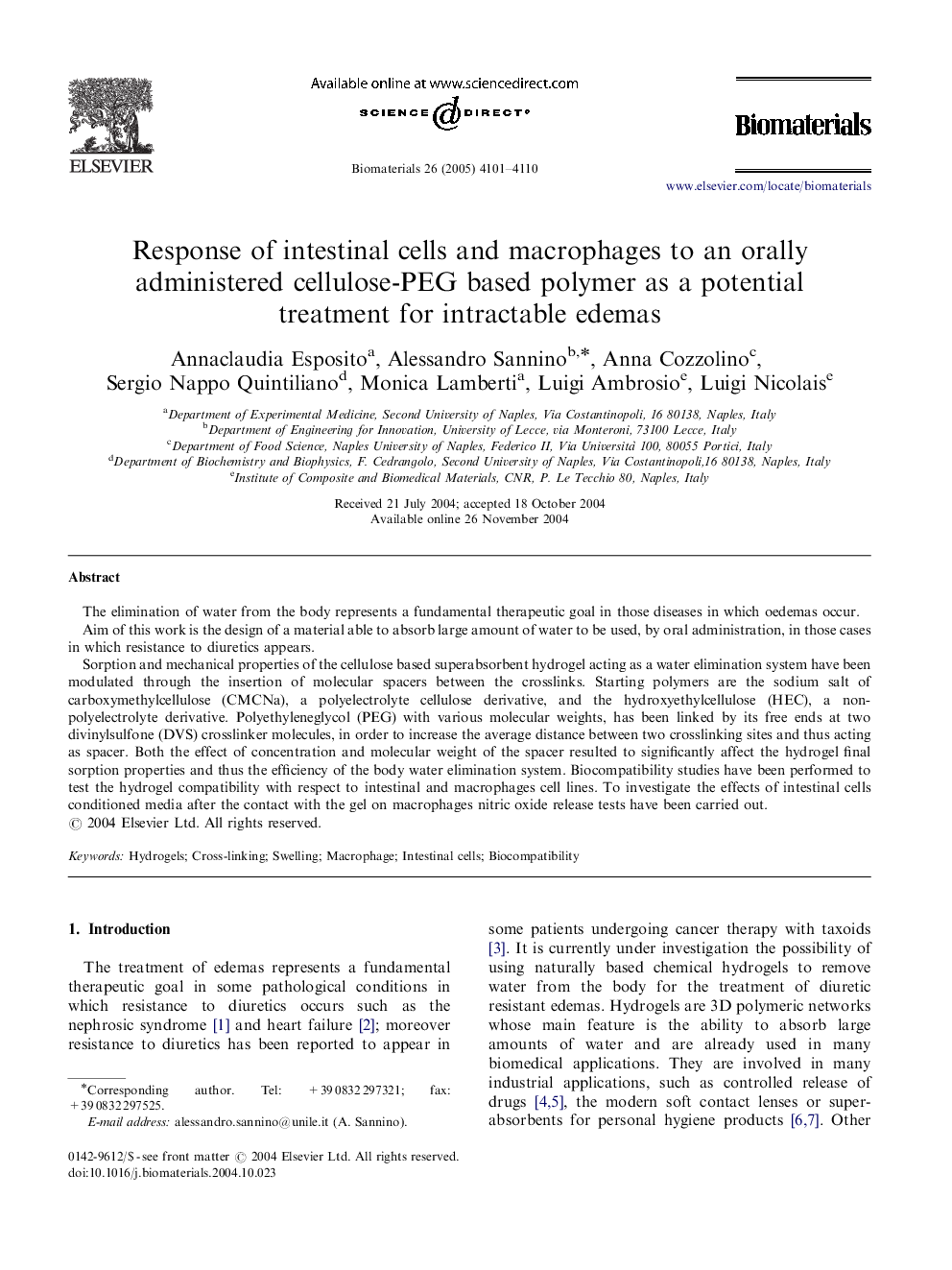| Article ID | Journal | Published Year | Pages | File Type |
|---|---|---|---|---|
| 12688 | Biomaterials | 2005 | 10 Pages |
The elimination of water from the body represents a fundamental therapeutic goal in those diseases in which oedemas occur.Aim of this work is the design of a material able to absorb large amount of water to be used, by oral administration, in those cases in which resistance to diuretics appears.Sorption and mechanical properties of the cellulose based superabsorbent hydrogel acting as a water elimination system have been modulated through the insertion of molecular spacers between the crosslinks. Starting polymers are the sodium salt of carboxymethylcellulose (CMCNa), a polyelectrolyte cellulose derivative, and the hydroxyethylcellulose (HEC), a non-polyelectrolyte derivative. Polyethyleneglycol (PEG) with various molecular weights, has been linked by its free ends at two divinylsulfone (DVS) crosslinker molecules, in order to increase the average distance between two crosslinking sites and thus acting as spacer. Both the effect of concentration and molecular weight of the spacer resulted to significantly affect the hydrogel final sorption properties and thus the efficiency of the body water elimination system. Biocompatibility studies have been performed to test the hydrogel compatibility with respect to intestinal and macrophages cell lines. To investigate the effects of intestinal cells conditioned media after the contact with the gel on macrophages nitric oxide release tests have been carried out.
